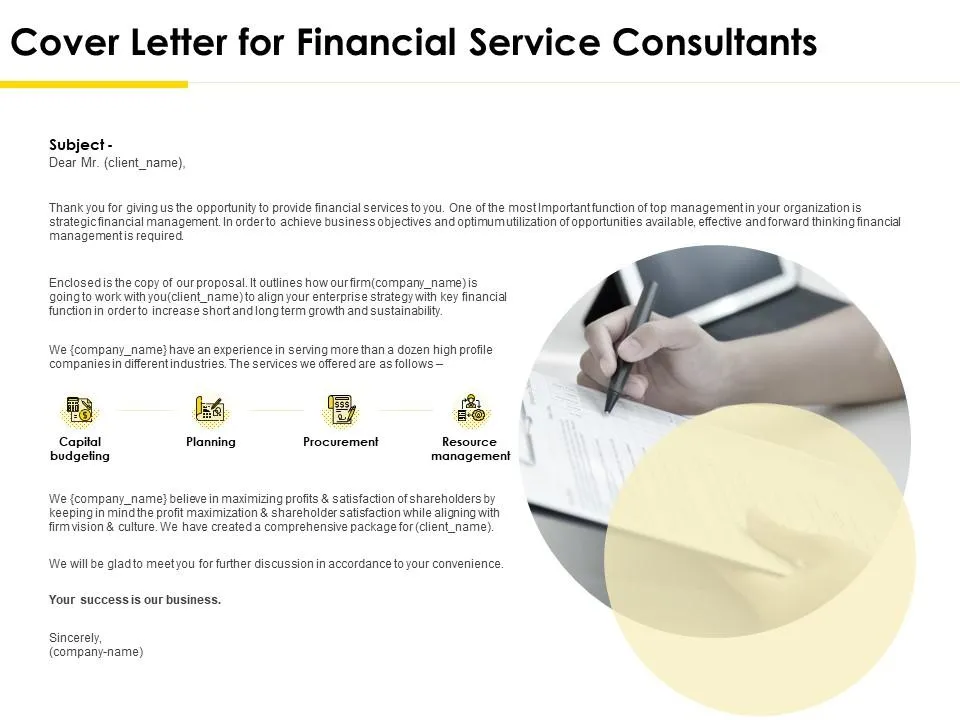Crafting a Financial Cover Letter that Captivates
In the competitive world of finance, a compelling cover letter can be your golden ticket to landing your dream job. It’s your first opportunity to make a lasting impression on potential employers and set yourself apart from the competition. A well-crafted financial cover letter is more than just a formality; it’s a powerful tool that allows you to showcase your skills, quantify your achievements, and demonstrate your genuine interest in the role and the company. This guide will walk you through the essential elements of creating a cover letter that not only gets noticed but also secures you an interview. It is essential to present yourself in the best possible light to highlight your qualifications and passion for the financial field.
Understanding the Importance of a Financial Cover Letter
Unlike a resume, which provides a factual overview of your experience, a financial cover letter allows you to tell your story. It’s your chance to explain why you’re the perfect fit for the specific position and the organization. The cover letter bridges the gap between your qualifications and the employer’s needs. It helps to provide context to your resume by highlighting the most relevant skills and experiences. A strong financial cover letter can demonstrate your communication skills, attention to detail, and understanding of the financial industry. It can also reveal your personality and enthusiasm, making you a more memorable candidate. Think of it as your personal marketing document.
Highlighting Your Skills and Qualifications
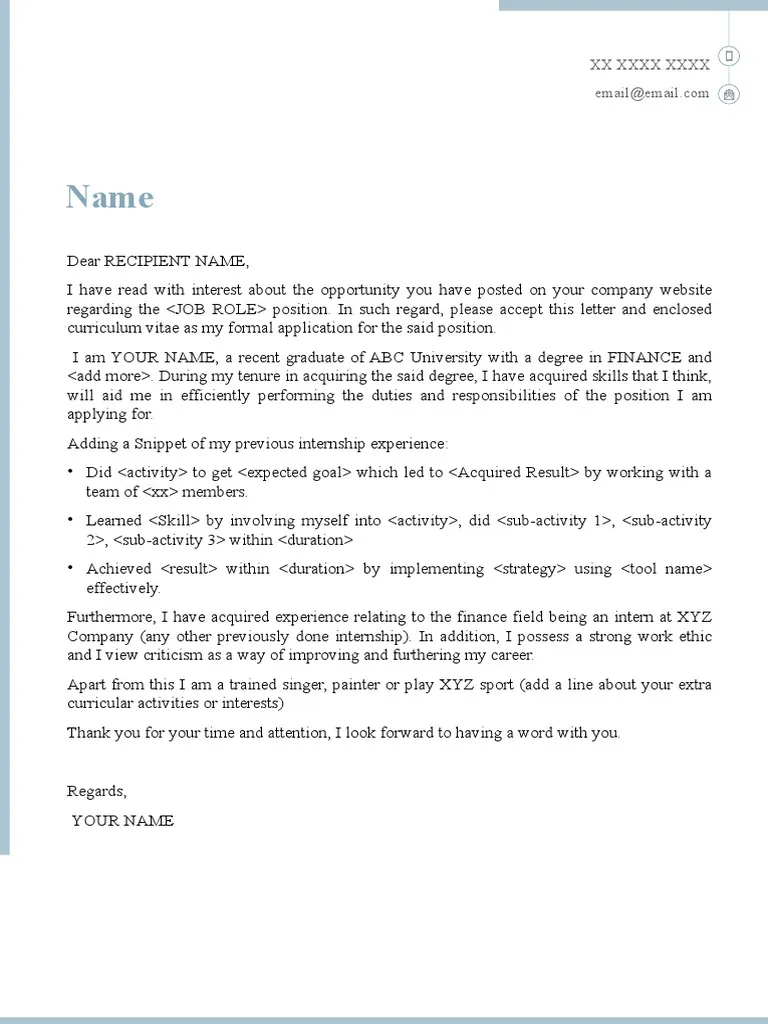
Your cover letter should clearly articulate your skills and qualifications, aligning them directly with the job requirements. This involves carefully reviewing the job description and identifying the key skills the employer is seeking. Then, provide concrete examples of how you’ve demonstrated those skills in previous roles. Include details of your financial experience, such as expertise in financial modeling, analysis, risk management, or regulatory compliance, depending on the job. Use action verbs to describe your responsibilities and accomplishments, such as “managed,” “analyzed,” “developed,” or “implemented.” Tailor your cover letter to each specific job, highlighting the skills that are most relevant to that position. Showing you have the skills required will make you the best candidate.
Quantifying Your Achievements for Impact
To truly impress potential employers, quantify your achievements whenever possible. Instead of simply stating you “improved efficiency,” provide specific metrics like “increased efficiency by 15%.” Numbers speak volumes and demonstrate the tangible value you brought to previous employers. Use data to illustrate your impact on the company’s bottom line, whether it’s through cost savings, revenue generation, or risk reduction. Quantifiable achievements prove your capabilities, your value, and helps your potential employer to see how you would contribute to their organization. Include specific examples that showcase your successes, such as “led a team that reduced operational costs by $50,000 annually.”
Tailoring Your Cover Letter to the Job
Generic cover letters are easily spotted and often discarded. Take the time to tailor each cover letter to the specific job you’re applying for. This means carefully reviewing the job description and identifying the key requirements. Address these requirements directly in your cover letter, providing specific examples that demonstrate how your skills and experience align with the role. Customize your letter to include the company’s name, and if possible, the name of the hiring manager. Show that you understand the company’s mission, values, and recent achievements. Demonstrate that you have taken the time to research the organization and are genuinely interested in the opportunity.
Researching the Company and the Role
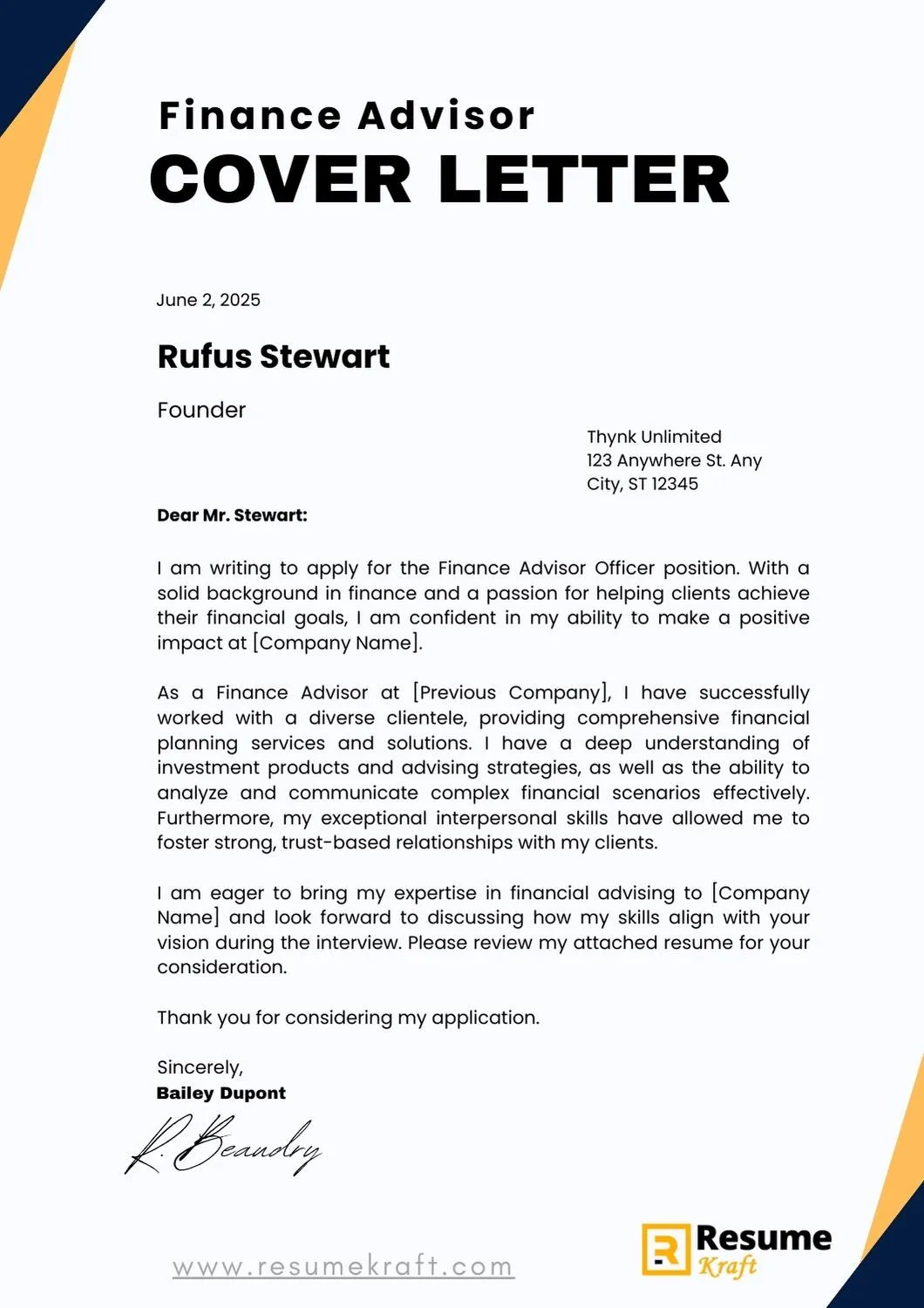
Before you start writing your cover letter, conduct thorough research on the company and the specific role. Visit the company’s website to learn about its mission, values, recent news, and financial performance. Explore the company’s social media profiles to understand its culture and brand. Study the job description carefully to grasp the required skills, responsibilities, and qualifications. Understanding the company’s needs will help you tailor your cover letter to address their specific challenges and opportunities. This demonstrates your proactive approach and genuine interest in the role. Research also helps to customize your letter to show you understand the company’s goals.
Showcasing Your Financial Acumen
In a financial cover letter, it’s crucial to highlight your financial acumen and technical expertise. Demonstrate your understanding of financial concepts, such as budgeting, forecasting, financial analysis, and investment strategies. Showcase your proficiency in relevant financial software, such as Excel, financial modeling tools, or industry-specific platforms. If you hold any relevant certifications, such as a CFA or CPA, be sure to mention them prominently. Use industry-specific terminology correctly and demonstrate your familiarity with financial regulations and compliance requirements. Providing this will instantly provide confidence to the hiring manager, and they will know you can do the job.
Formatting and Structure Making it Readable
Your cover letter should be easy to read and visually appealing. Use a professional font, such as Arial or Times New Roman, and maintain a consistent font size. Keep your letter concise and avoid lengthy paragraphs. Break up the text into shorter paragraphs to improve readability. Use bullet points to highlight key achievements or skills. Ensure your letter has adequate white space, including margins and line spacing. Proofread your letter carefully to eliminate any grammatical errors or typos. A well-formatted cover letter demonstrates attention to detail and professionalism, which are essential qualities in the financial industry. Make it easy to read, and do not overload it with text.
Essential Elements of a Financial Cover Letter
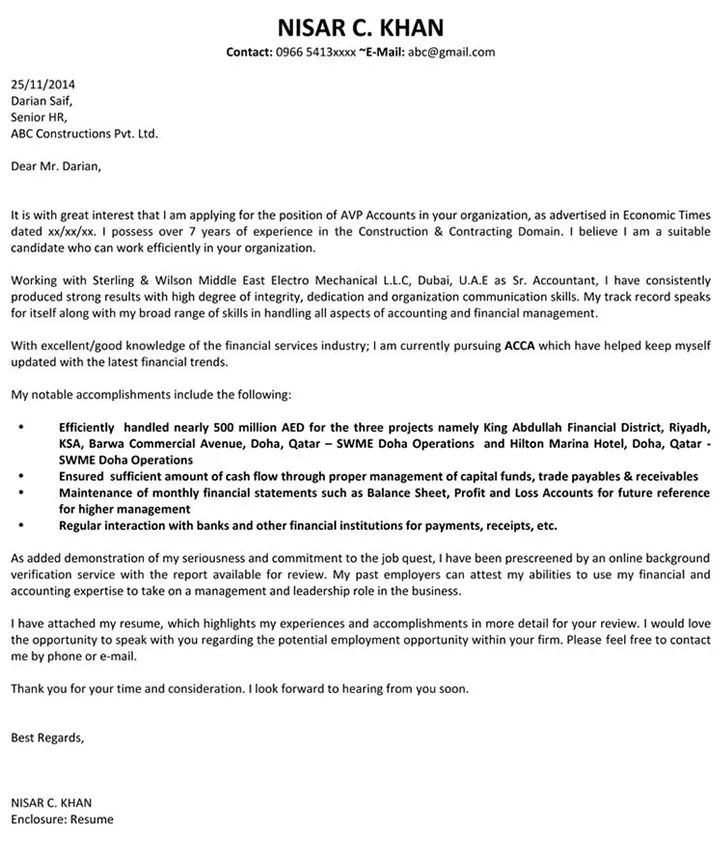
A comprehensive financial cover letter should include several key elements. First, include your contact information, the date, and the employer’s contact information. Use a professional salutation, such as “Dear Mr./Ms. [Last Name].” The opening paragraph should grab the reader’s attention and state your purpose for writing. The body paragraphs should showcase your skills, experience, and achievements, aligning them with the job requirements. The closing paragraph should reiterate your interest in the role and include a clear call to action, such as requesting an interview. Finally, ensure your letter is well-written, error-free, and tailored to the specific job.
Contact Information and Salutation
Start your cover letter with your contact information at the top, including your name, address, phone number, and professional email address. Then, include the date and the employer’s contact information, if available. Address the hiring manager by name, using a formal salutation such as “Dear Mr./Ms. [Last Name]”. If you are unable to find the hiring manager’s name, use a general salutation, such as “Dear Hiring Manager.” Ensure your salutation is appropriate and professional to set the right tone from the start. Double-check the spelling of the hiring manager’s name, as this is essential for making a good first impression.
Opening Paragraph Grabbing Attention
The opening paragraph is your chance to make a strong first impression. Start with a compelling hook that immediately grabs the reader’s attention. State the position you’re applying for and where you found the job posting. Briefly mention your most relevant qualifications and experience, showcasing your key skills and achievements. Express your enthusiasm for the opportunity and the company. Avoid generic openings; instead, tailor your opening to the specific job and the company’s needs. The opening paragraph should be concise and engaging, setting the tone for the rest of your cover letter.
Body Paragraphs Demonstrating Value
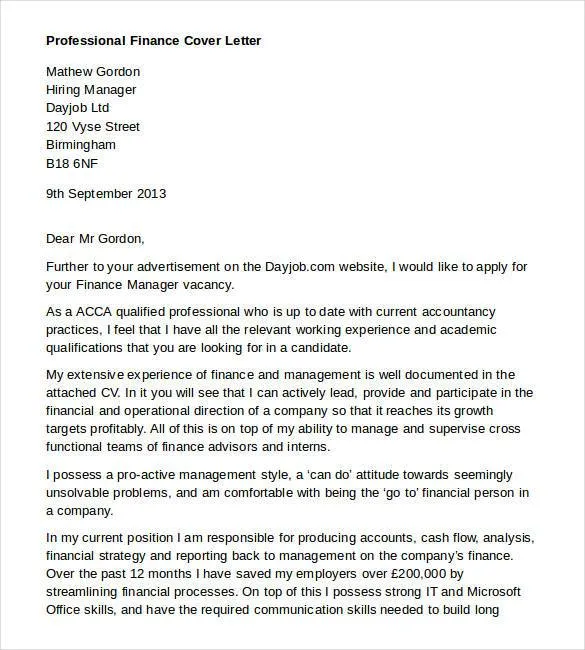
The body paragraphs are the core of your cover letter, where you demonstrate your value to the employer. Use these paragraphs to showcase your skills, experience, and achievements, providing specific examples to support your claims. Explain how your qualifications align with the job requirements, and tailor your examples to the specific needs of the role. Focus on quantifiable results, highlighting the positive impact you’ve had in previous positions. Structure your paragraphs logically, using clear and concise language. Keep each paragraph focused on a single point or theme. This section should be the most comprehensive, as it helps to sell yourself to the employer.
Closing Paragraph Call to Action
In your closing paragraph, reiterate your interest in the role and the company. Summarize your key qualifications and emphasize how you can contribute to the organization’s success. Include a clear call to action, such as requesting an interview or expressing your availability for a follow-up conversation. Thank the hiring manager for their time and consideration, and reiterate your enthusiasm for the opportunity. End with a professional closing, such as “Sincerely” or “Best regards,” followed by your typed name. A strong closing leaves a lasting impression and encourages the employer to take the next step.
Proofreading and Editing for Perfection
Before submitting your cover letter, proofread it carefully for any errors in grammar, spelling, and punctuation. Errors can undermine your credibility and make you appear unprofessional. Use a spell checker, but don’t rely on it entirely. Read your letter aloud to catch any awkward phrasing or sentence structure. Ask a friend or colleague to review your cover letter for feedback. Ensure your cover letter is free of typos and grammatical errors. A polished and error-free cover letter demonstrates your attention to detail and professionalism, making a positive impression on potential employers. This is extremely important, as this can quickly get you removed from the list of candidates.
Avoiding Common Mistakes in Financial Cover Letters
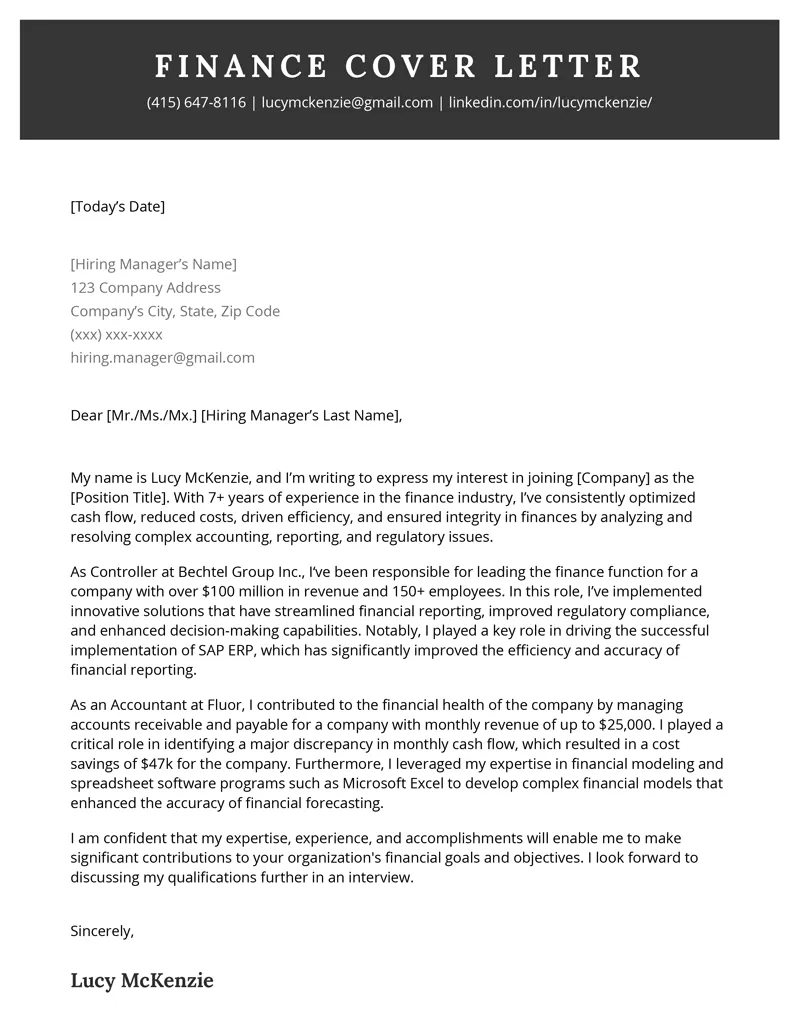
Avoid these common mistakes to ensure your cover letter stands out. Don’t use generic cover letters; always tailor your letter to the specific job and company. Avoid using jargon or overly complex language, as this can confuse the reader. Don’t focus solely on your job duties; instead, highlight your achievements and quantifiable results. Avoid repeating information from your resume; use the cover letter to elaborate on your qualifications and explain why you’re the perfect fit. Don’t make the cover letter too long; keep it concise and to the point. Make sure you show you understand the role and have researched the company. By avoiding these pitfalls, you can create a cover letter that showcases your skills and helps you land your dream job.
In conclusion, a well-crafted financial cover letter is a crucial tool in your job search arsenal. By following these guidelines, you can create a cover letter that captures the attention of potential employers, showcases your skills and achievements, and ultimately helps you land your desired position. Remember to tailor your letter to each specific job, quantify your achievements, and proofread carefully. With a compelling cover letter, you’ll be well on your way to a successful career in finance.
